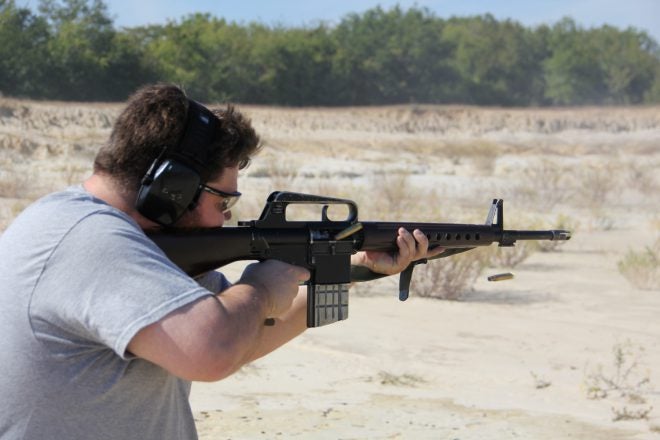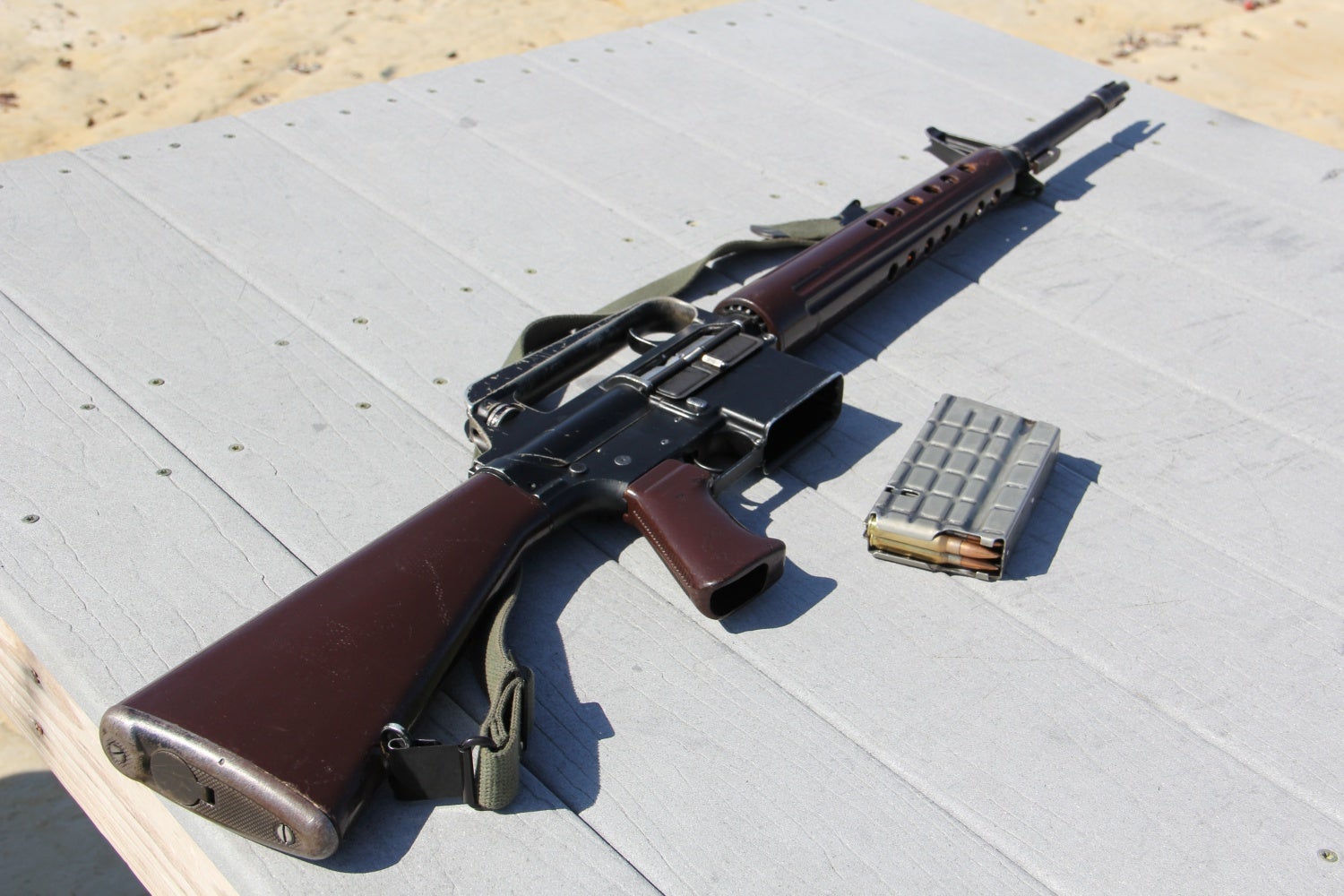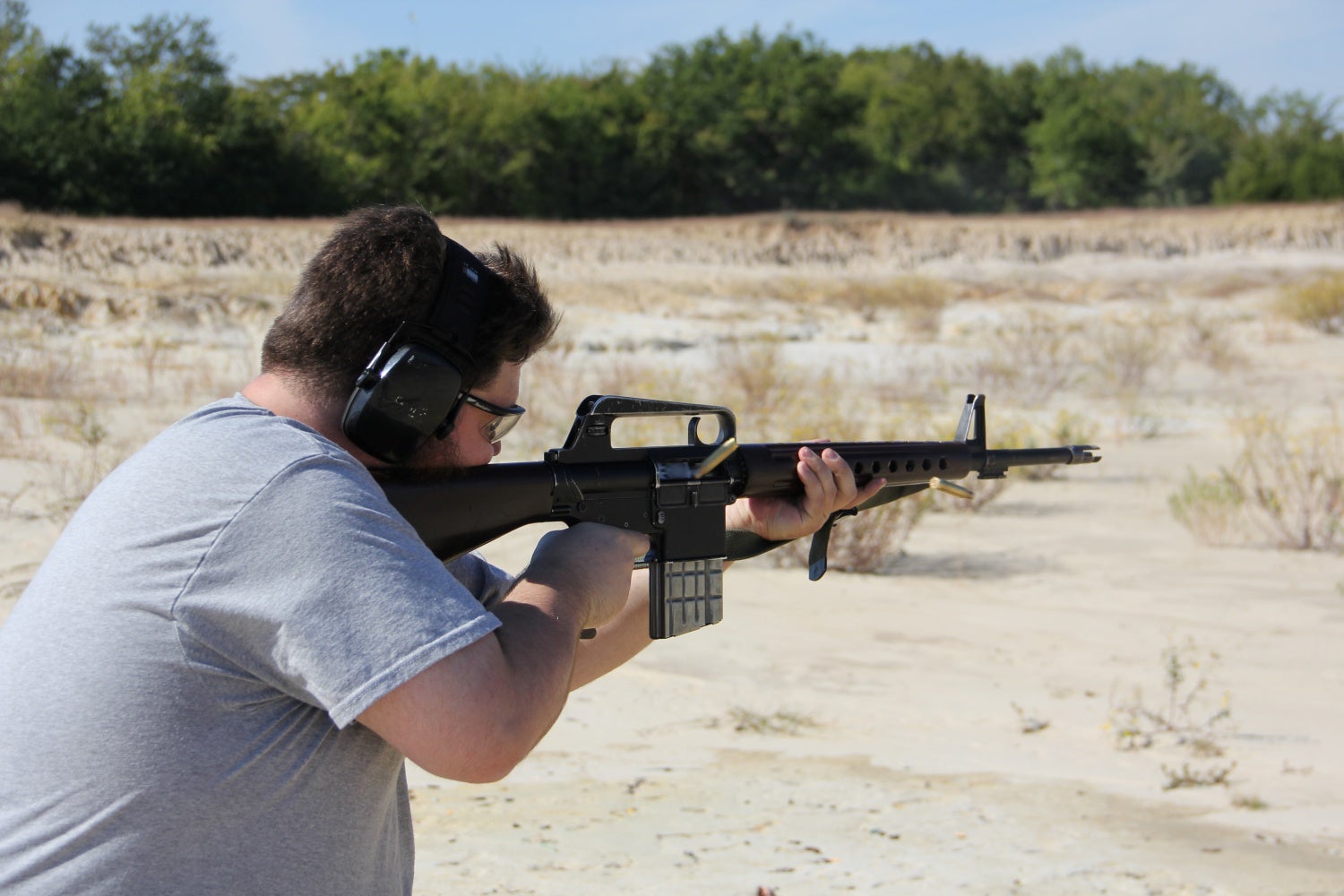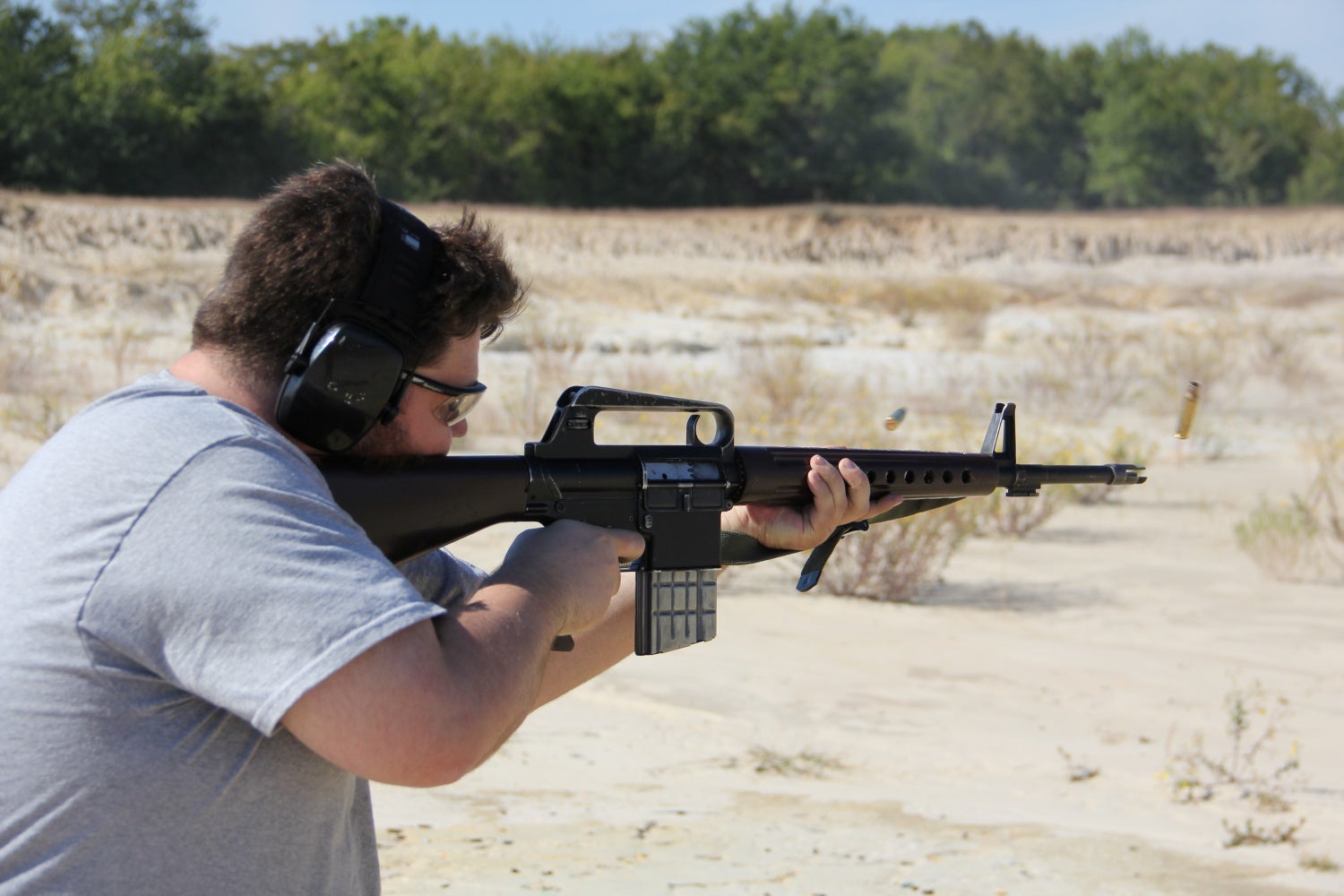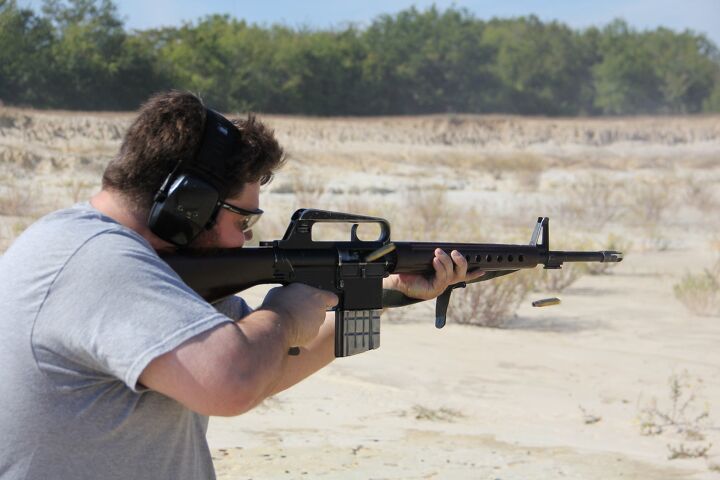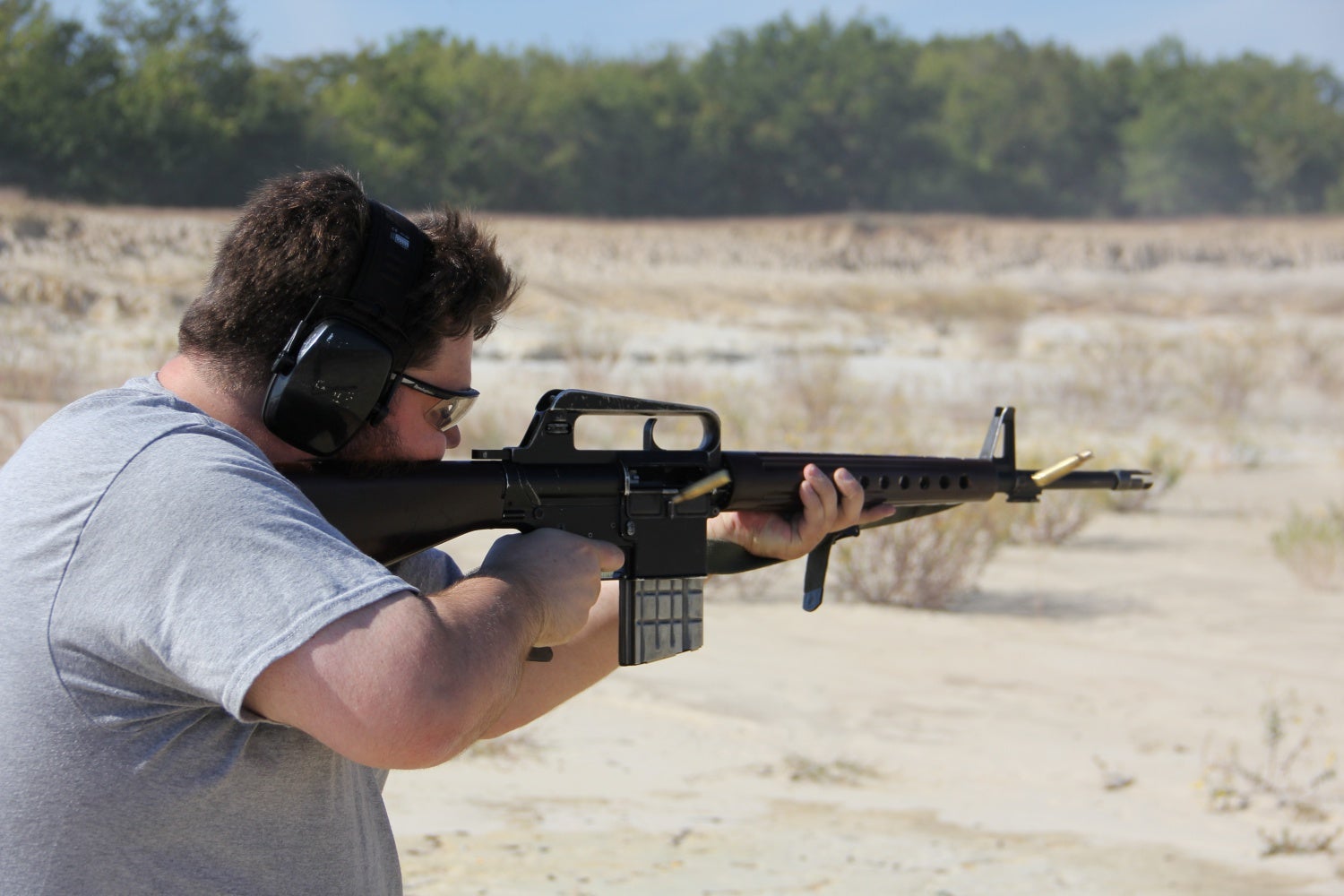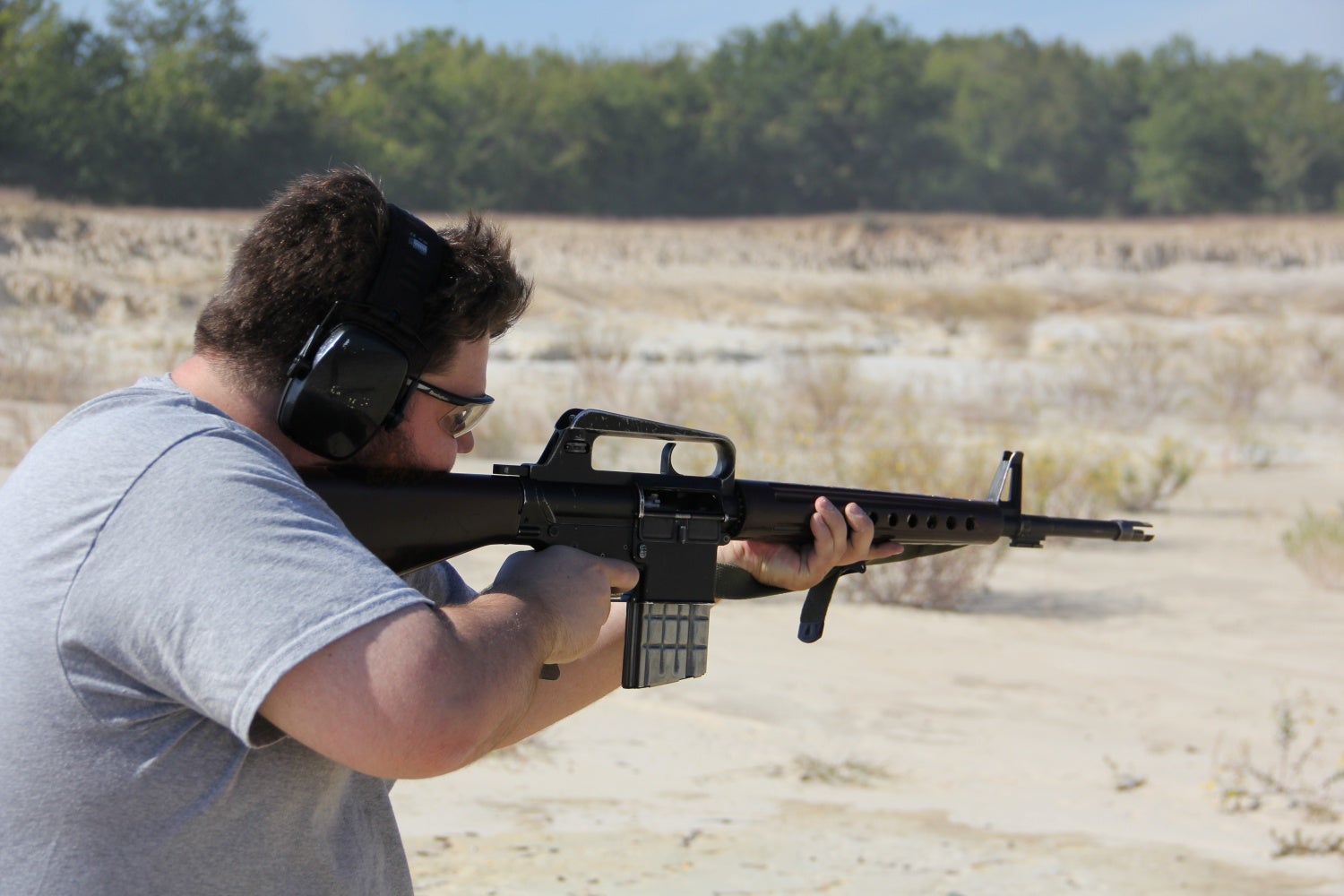We hear a lot of talk about how some firearms are “controllable”, while others are not. The word “controllable” or “manageable” is often used in gun reviews to describe the recoil characteristics of a gun, even though without additional context or clarification it tells us very little. I want to talk very briefly about what the word “controllable” means in the context of firearms, and how it actually relates to a firearm’s recoil characteristics.
Simply put, I would say that whether a firearm is controllable or not is a separate but connected issue to that of how much recoil it has. Recoil is an easily quantified element of the firearm system; the rifle can be hung in a cradle and hooked up to accelerometers to determine how fast and how far it moves when it fires, which gives you various different quantities of recoil, such as recoil energy, recoil velocity, and recoil impulse. Controllability, however, is a much more complex issue, having to do with the rifle’s ergonomic characteristics, layout, and fit to the shooter, as well as his size and skill. Let’s make clear the difference between these two elements using an example:
That is a seven pound piece of Dutch-made hardware, capable of firing all twenty 7.62x51mm rounds in its magazine in less than two seconds. The lightweight construction, high rate of fire, and powerful ammunition make the original select-fire AR-10 a beast of a gun to shoot. If I had to describe it, I would say it was like riding the lightning – the experience closest in my mind to shooting that AR-10 would be when I was (voluntarily) tased during a police department equipment demonstration I attended years ago. So fierce is the torrent of recoil of that firearm, it is enough to knock a grown man backwards… Yet I would describe the AR-10 as controllable. Some of you (including some who have shot the same gun or ones of the same basic type) must be thinking I am insane; I just said the recoil was torrential, so how can the rifle be controllable at the same time?
In my experience, holding the muzzle of the original AR-10 more or less level in full auto isn’t as much of a challenge as I expected it to be. The straight line stock assists the shooter in absorbing the recoil straight back, allowing the muzzle to stay straight and level with the point of aim. I realize extraordinary claims require extraordinary proof, so here it is:
In these shots, I am using the sling to help support and control the rifle, which certainly helped a lot, but more important was the straight line stock and some skill at concentrating with a fully automatic weapon in your hands. When I say the rifle is “controllable”, that’s not because I think anyone can control it, but to illustrate the difference between what may be an entirely controllable weapon for some shooters, like that AR-10 (go to 7:48 in this video for an excellent example of that), and one that thanks to its low recoil is easily managed by anyone with basic skill, like its close cousin, the M16:
So what’s the takeaway? It’s that recoil is a set of easily measured quantities that help give us an idea of how a firearm will act when we shoot it, but that controllability is a subjective element that will differ from gun to gun (even within the same caliber) and from person to person. Quantifying controllability therefore presents a problem: Depending on the shooter, his technique, and how much he is willing and able to put up with in terms of recoil, a weapon could earn the label “controllable”, when just as easily one could fairly categorize it as a method of cruel and unusual torture.
Postscript: After I wrote this article (but before it was published), Ian McCollum released a Forgotten Weapons video on a select-fire Chinese Type 56 AK that is going up for auction with James D. Julia. That video is embedded below, but I wanted to take a moment to add a little bit extra to this discussion about controllability and recoil. In the text of the article above, I linked to another Forgotten Weapons video, where he shoots the exact same fully automatic AR-10 that I did. This gives us an interesting opportunity to compare how the AR-10 (which is considered by many sources to be “uncontrollable”) and the classic milled AK (which is considered almost by definition to be “controllable”) compare in terms of controllability, with the exact same shooter. I’d recommend my readers check out the AR-10 video, as well as the video below, before continuing.
In the AR-10 video, Ian notes that the rifle – which has horrendous recoil – pushes the shooter straight back. In the Type 56 AK video above, you can see that the stock’s cant actually makes it more of a challenge to keep the AK’s muzzle level, even though recoil is not nearly as harsh. This then strikes at the central point of this article: That the ergonomic and technical design of a rifle is just as important as the power of ammunition it fires!
 Your Privacy Choices
Your Privacy Choices
